As I have often expressed, it seems to me that human nature has a very unfortunate tendency to dismiss out of hand many of the secretive creatures around us as gross, dangerous, or even vicious without a second glance or thought. But, as a creationist I believe that all of creation works together according to the will of God and that every creature has a function and a special order in creation designed specifically by Him. Within this order, lie those black-sheep “creeping things,” serving many crucial functions and performing thousands of fascinating tasks that go unnoticed every day. As I have explained in the chapter of Dominion, many of these tasks serve to benefit mankind directly while many others support the so-called web of life that provides countless necessities for us. For these reasons and others, I think it is important to dispel many of the misconceptions about reptiles, amphibians, insects and arachnids that have become ingrained in our modern culture, and none more so than that of the serpent.
For some reason, children seem more apt to overcome these hurdles or simply fail to build any psychological obstacles in the first place, and see the attraction, if not the value, of these intriguing creatures. It often is far more difficult to win over the adults who presumably would be more mature and possess a higher degree of education, but instead come equipped with their own collections of irrational fears and a high degree of misinformation. In many cases, I have seen parents with a disdain for reptiles, whose perception becomes altered by the positive experiences of their children. Just seeing your child’s eyes light up as he or she beholds the God-given beauty ofa rosy boa or the look of sheer wonder on your child’s face as they stare into the stoic eyes of a tortoise, can instantly change the way you feel about this amazing group of animals.
In any case, God has given us dominion over these organisms for a purpose, and I do not believe that the purpose is for mankind to fear, avoid, or eradicate them. When we consider all that can be learned and gained by the study of herpetology, the tremendous regard of our Creator for His creation becomes inescapably evident. How loving and awesome our Lord is to have created these fascinating creatures (and everything else) just for us!
Many can perceive God’s care for man by taking a glance at the animal kingdom. But what if there was an animal that played a role in our rebellion against God? What about an animal that was cursed? What about an animal that was actually punished by God? And if that animal lurked silently through our world today, hunting, strangling, and swallowing its prey without the slightest inkling of remorse for the act, or for that matter not the slightest shred of any emotion, wouldn’t such an animal be the physical manifestation of pure evil? Well many seem to think so, but I for one know better, and I suspect that if you have made it thus far in this text, you might as well.

That brings us to The Serpent: the legendary serpent, a.k.a. the snake. While in actuality a great many of the species of snakes alive today are quite miniscule and inconspicuous, nevertheless the snake is perhaps the most disliked and feared animal on the entire planet. The mere sight of a shimmering scaly creature rhythmically slithering across the path ahead may send shivers down the spine and send one running for safety or worse, the nearest weapon. Although I obviously do not personally share this sentiment, it is rooted in the curse that was placed upon the serpent in the Garden of Eden.
Let’s take a closer look at the true historical events that resulted in the present state of affairs plaguing each of us today. In Genesis 2:16-17 God gave Adam a single rule with a single decisive consequence.
16 And the Lord God commanded the man, saying, Of every tree of the garden thou mayest freely eat: 17 But of the tree of the knowledge of good and evil, thou shalt not eat of it: for in the day that thou eatest thereof thou shalt surely die.
While this consequence may at first seem harsh, when we consider that sin is at odds with the very nature of God, and how He by being the embodiment and very definition of Holiness cannot therefore have any contact or fellowship with sin, we then can understand that death was an essential penalty for it. Scripture goes on to tell us that the wages of sin is death. Death was not merely a critical punishment, it was the price of sin, it was the only possible and wholly appropriate result of sin.
So how then did we come to bite into that forbidden fruit? We find the answer in Genesis 3:1-6 in perhaps the saddest story ever told:
1 Now the serpent was more subtle than any beast of the field which the Lord God had made. And he said unto the woman, Yea, hath God said, Ye shall not eat of every tree of the garden? 2 And the woman said unto the serpent, We may eat of the fruit of the trees of the garden: 3 But of the fruit of the tree which is in the midst of the garden, God hath said, Ye shall not eat of it, neither shall ye touch it, lest ye die. 4 And the serpent said unto the woman, Ye shall not surely die: 5 For God doth know that in the day ye eat thereof, then your eyes shall be opened, and ye shall be as gods, knowing good and evil. 6 And when the woman saw that the tree was good for food, and that it was pleasant to the eyes, and a tree to be desired to make one wise, she took of the fruit thereof, and did eat, and gave also unto her husband with her; and he did eat.
We know from Rev 12:9, and 20:2 that “that old serpent” in this context is the devil…. that it was Satan that took the form of a serpent and beguiled Eve. The evil that was committed that fateful day was certainly not committed by any mere animal, the real evil was committed by man and the blame for these sins lies squarely on our shoulders. Although Satan is also incontrovertibly responsible for maliciously attempting to lead mankind astray, he was not the one who brought the curse into our world. Although I cannot blame man for looking for a scapegoat here, and the coldblooded snake was not only handy, it was implicated. The anguish associated with the day that mankind fell, the day that sin arose, and death, disease, and suffering entered Gods perfection, was a day that no one would want to take responsibility for. This was clearly evident immediately after the disobedience of mankind. That day Adam tried to blame Eve, and then even went so far as to try to blame God for giving Eve to him, and Eve then tried to blame the serpent.
And so, God, as an ever-present, dramatic reminder of the seriousness of sin, has left a group of animals legless and just as scripture states, enmity between mankind and the serpent persists to this day. Although I cannot help but think that the enmity, was intended to foretell of the hatred and hostility between mankind and Satan along with his demons, rather than between man and animal.
Genesis 3:15 And I will put enmity between thee and the woman, and between thy seed and her seed; it shall bruise (more literally crush) thy head, and thou shalt bruise his heel.
Even though in context we’ve established that the serpent is Satan and the seed of the woman (and not the seed of a man) is Christ, born of a virgin. This by the way is known as the protoevangelium or the first gospel. This prophecy refers to Christ’s triumph over sin, the crushing blow to the sin curse, and all its consequences, that occurred through His sacrificial death on the cross and His resurrection. The perfect sinless sacrifice was made on our behalf, for all those that place all of their faith and trust in Jesus and his redemptive death, the necessary payment for sin. And when He rose again it demonstrated that the perfect sacrifice was accepted by God the Father. I find it extremely comforting to know that as soon as sin entered the world, God immediately informed us here in Genesis 3:15, that He already had a plan of salvation for us.
Although believers today can clearly grasp the symbolism, you can see how through the ages, many have missed this concept and heels everywhere plodded along leaving a wake of deceased Ophidia. Although, it should be mentioned that, in 1611, when the King James Bible was published and for at least 100 years afterward, the word serpent encompassed an entirely different group of animals than the serpent of today. This familiar word, serpent was used for lizards and nearly all reptiles (with the exception of turtles), eels or long-bodied fish, and even some amphibians such as salamanders were known as water serpents. But, from the context in Genesis 3, I believe that we are indeed talking about the snake in this instance.
There is really no reason to directly associate the serpents that we see today with evil, but their morphology, their physical state, has a poignant and valuable lesson for us. In Genesis 3:14 God drastically changes the serpent… “upon thy belly shalt thou go, and dust shalt thou eat all the days of thy life.” We see the animal being reduced to crawling on its belly from being upright, (and very probably legged). It has been said that our upright bipedal posture is representative of our dominion and authority over the animal kingdom, and whatever uprightness and authority the creature possessed; it was taken away with onset of the curse. This shows us how the pride of Satan and even our own pride are in direct opposition to God and just how quickly the proud can be reduced to a lowly stature.
And further humiliation is added to the serpent as it is commanded to “eat dust”. Today we see in snakes this bifurcated, forked tongue flicking out and drawing dust into the mouth constantly. Now the dust and scent particles are deposited in the Jacobsons organ in the roof of the mouth, not literally eaten in the modern sense of the word, but dust is taken in to the mouth nonetheless. The snake is absolutely reliant on this process, it is how the snake smells; to navigate, to detect and tract potential prey and predators, and to detect mates and rivals, by literally tasting the air and the dust there in. It could also be said that nearly all species of snakes (with perhaps the exception of sea snakes) actually do unintentionally eat dust and dirt on their prey items. Since most snakes hunt terrestrial animals at some point, which may be killed by constriction or envenomation, the (sometimes bloodied) quarry is often coming into contact with the ground during the process. The snake, which always swallows its food whole, has no gag reflex, and consumes whatever dust or other debris that may be adhering to its victim. This is just one more example, where what we see around us, testifies to the reality of the biblical account.
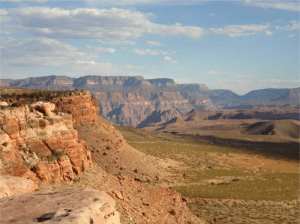
As I have stated, although God has left a message in the current condition of the serpent, this does not mean that it is the serpent that is mans enemy. The real issue is between mankind and Satan along with his demons. In time passed, the snake itself had been blamed for the sin curse, but we certainly know that to be biblically untrue. Furthermore, I do not believe it is illogical to appreciate relics of the curse. And I do not believe that it is sinful to see beauty in the cursed parts of creation any more than it is sinful to see beauty in the remnants of God’s judgment upon mankind. To illustrate this, just take a look at The Grand Canyon. This magnificently massive chasm is either directly or indirectly, a result of the worldwide flood described in the book of Genesis. Aside from humanity’s first sin, this was perhaps the worst moment in human history.
Genesis 6:5-11 And God saw that the wickedness of man was great in the earth, and that every imagination of the thoughts of his heart was only evil continually. 6 And it repented the Lord that he had made man on the earth, and it grieved him at his heart. 7 And the Lord said, I will destroy man whom I have created from the face of the earth; both man, and beast, and the creeping thing, and the fowls of the air; for it repenteth me that I have made them. For with man, goes the world created for him.
But thankfully, Noah found grace in the eyes of the Lord and God allowed us to persist and flourish. And today almost no one gazes at the majesty of this canyon and tearfully laments our sinful history. Instead the power and splendor created by just a trace of a God’s might overwhelms our senses.
For some like myself, a vestige of the brilliance and complexity of the mind of God found in the peculiar creatures of this world produce a similar result. For others the movement of a snake is an immediate catalyst for a fearful rush of adrenaline-laced “flight or fight” response. In contrast, I rarely see a snake in motion without marveling at the beauty of its design and the intricacy of the method of locomotion. And I am not alone in such thought, take this quote from our long passed brother Charles Owen, in An Essay Towards A Natural History of Serpents:
The Back-Bones of Serpents are a wonderful Composition: How thick are they with Joints? How numerous and strong are the co-operating Muscles? By this curious Articulation of the Joints, they can turn and wind their bodies any way without any difficulty. The Outside of their Skin is a most elegant Composition: to a common Eye, their Tegument has a rugged uneven Aspect; but, to a proper Judge, the scales of Vipers are found to be a most exquisite Piece of Mechanism; the Symmetry of the whole is geometrically exact, and vastly beautiful, not imitable by human Skill.
On a side note, I often wonder how an atheist views such beauty. The very existence of beauty, our recognition of it, and our appreciation for it, declares the reality of the sender-receiver nature of our existence. Beauty has a cause, designed by its Sender, its Creator. And it produces a desired effect in the receiver, our appreciation and awe. What good is beauty in a chaotic world of random chance? What good is beauty without someone to interpret and appreciate it? When beauty moves the soul and touches our emotions, does this not call out to our eternal nature? If you believe that this life is all there is for you and you are soon to be completely and absolutely permanently gone, why do you allow yourself to be dazzled by that which you find beautiful? It is as if the secular worldview is saying, here you haphazardly evolved bag of chemicals, gaze upon a thousand sunsets and feel nothing, for nothing you will be when your chemicals fail to react to one another any longer and that illogically fearful event called death occurs. Why would anyone fear nothing? I have a difficult time believing that anyone fully believes this to be the case.
At some point in each of our lives we will all seriously contemplate God’s existence and consequentially His nature. To put it simply, those that deny His existence are or at least were at one time, scared of God. Attempting to wrap your mind around the existence of an eternal and omnipotent being who created you and knows your every thought, appropriately results in fear. And perhaps for the deniers, they are afraid of being accountable to Him and instead push this thought out of their minds. I for one was once terrified of this accountability, as I knew He existed, but for a long and wasted portion of my life, I did not want to investigate who He is and what He requires of me. Yet eventually it is that very rational fear that may motivate us to seek a relationship with this frighteningly holy and powerful being. So fear, but fear not, the Bible tells us that knowledge begins with fear of the Lord. It may be the fear of accountability that drives you to the salvation and forgiveness that God offers you through the death and resurrection of Jesus Christ. However, if you are one of those irrational people who fear the serpent rather than the serpents Creator, it is my hope and prayer that you pause and consider the tragic folly of this position.
-Taken from the book, All That Creepeth: A Biblical View of Reptiles and Amphibians by Nathan Hutcherson
All photos property of author
Scripture references taken from King James Bible (KJV)
Learn more about the design of snakes and other fascinating creatures with Nathan’s DVD series, found in the Creation Superstore!

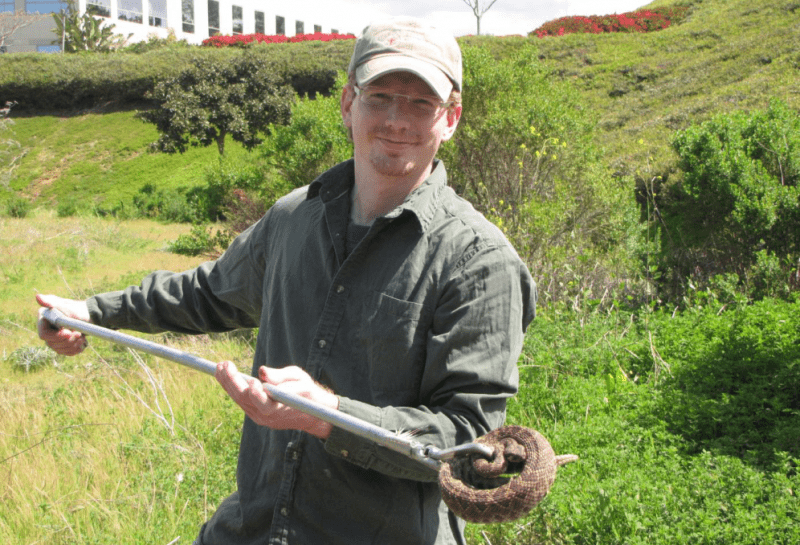



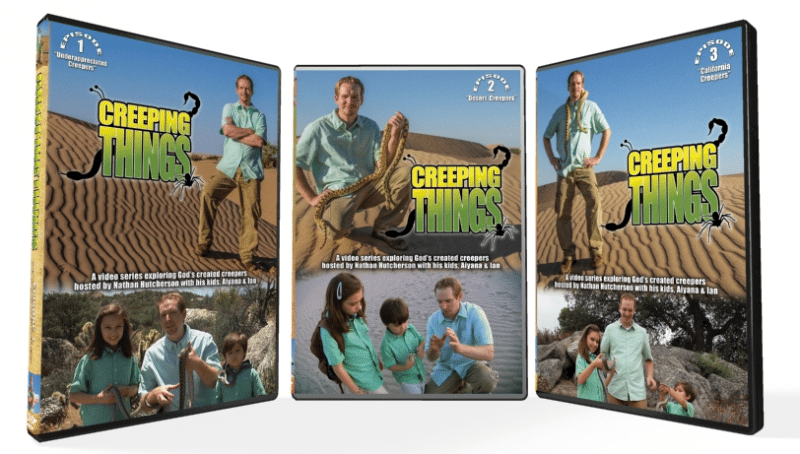

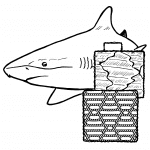
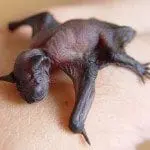
Excellent food for thought. I am one who respects (not fears) snakes, although I don’t look forward to any encounters with them. When viewed from a distance or on television, I, like you, admire the way they move. (FYI – some, like my wife, have an overwhelming fear of snakes. She cannot even see the photo or video of a snake without going into full panic. It was a bad experience as a small child.) Thank you for reminding us our enemy is not an animal, but satan himself. I’m rather new to David Rives Ministries, but am learning to respect and appreciate it.